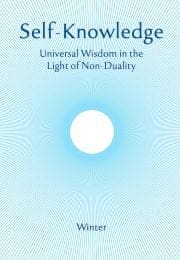The Non-Duality of Shri Shankara
Further extracts from H P Shastri’s essay on the Outline of the Advaita of Shri Shankara
Contemplation (Nididhyasana)
The philosophy expounded by Shri Shankara is not rationalism like the philosophy of Descartes or Spinoza. It is a metaphysical ontology which has no peer in Western thought. The way to be established mentally in the truth of the non-dual philosophy is to reason deeply about what you have learnt from the teachings; but eventually this deeper intellectual knowledge is to be converted into experience through the process called nididhyasana or contemplation.
By reading the Upanishads and kindred texts over and over, with faith and concentrated attention, one comes to grasp their meaning. By daily reflection and meditation this meaning takes root in the intellect, and by ceaseless contemplation the subject-matter of the Upanishads (Shruti) becomes our direct experience. The experience of the nature of Self as Sat- Chit-Ananda—existence-consciousness-bliss—is an experience of the Self and not of the mind. As Self, or Atman, is the support of all phases of experience, it follows that the experience of Self does not depend on any other thing.
The experience of Self is obtained through the Self in the Self, above the mind and the intellect. It is not subject to the realm of cause and effect, nor is this experience the result of any particular process. The product of high ethical living is converted in the end into the light of Self. The mind acquires the heat, so to say, through the ethical process of devotion and self-sacrifice, but the light of non-dual experience is above all. Mere shravana (listening) and manana (cogitation) cannot give rise to the experience of Self in the Self itself. Fire is not a modification of heat but it is the culmination of heat. The same applies to the experience of reality. The new light is created in our inner being which converts the whole conception of Self into the infinity of Sat-Chit-Ananda.
Subscribe or enrol for free guest access to read all of this article and Self-Knowledge online.
Already subscribed or enrolled? Log in:


